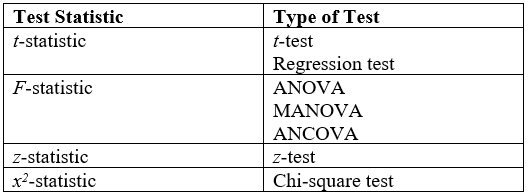|
Rank Test
{{Short description, Type of statistical test In statistics, a rank test is any test involving ranks. Rank tests are related to permutation tests. Motivation The motivation to test differences between samples is that ranks are in some sense maximally invariant to monotone transformations. This may be important when there is outliers or when dealing with ordinal data. Examples * Wilcoxon signed-rank test * Kruskal–Wallis one-way analysis of variance ** Mann–Whitney U (special case) * Page's trend test *Friedman test The Friedman test is a non-parametric statistical test developed by Milton Friedman. Similar to the parametric repeated measures ANOVA, it is used to detect differences in treatments across multiple test attempts. The procedure involves ranking ... * Rank products * Cucconi test * Lepage test Literature * Boos, D.D., Stefanski, L.A. (2013). Permutation and Rank Tests. In: Essential Statistical Inference. Springer Texts in Statistics, vol 120. Springer, New Y ... [...More Info...] [...Related Items...] OR: [Wikipedia] [Google] [Baidu] |
Statistics
Statistics (from German language, German: ', "description of a State (polity), state, a country") is the discipline that concerns the collection, organization, analysis, interpretation, and presentation of data. In applying statistics to a scientific, industrial, or social problem, it is conventional to begin with a statistical population or a statistical model to be studied. Populations can be diverse groups of people or objects such as "all people living in a country" or "every atom composing a crystal". Statistics deals with every aspect of data, including the planning of data collection in terms of the design of statistical survey, surveys and experimental design, experiments. When census data (comprising every member of the target population) cannot be collected, statisticians collect data by developing specific experiment designs and survey sample (statistics), samples. Representative sampling assures that inferences and conclusions can reasonably extend from the sample ... [...More Info...] [...Related Items...] OR: [Wikipedia] [Google] [Baidu] |
Statistical Hypothesis Testing
A statistical hypothesis test is a method of statistical inference used to decide whether the data provide sufficient evidence to reject a particular hypothesis. A statistical hypothesis test typically involves a calculation of a test statistic. Then a decision is made, either by comparing the test statistic to a Critical value (statistics), critical value or equivalently by evaluating a p-value, ''p''-value computed from the test statistic. Roughly 100 list of statistical tests, specialized statistical tests are in use and noteworthy. History While hypothesis testing was popularized early in the 20th century, early forms were used in the 1700s. The first use is credited to John Arbuthnot (1710), followed by Pierre-Simon Laplace (1770s), in analyzing the human sex ratio at birth; see . Choice of null hypothesis Paul Meehl has argued that the epistemological importance of the choice of null hypothesis has gone largely unacknowledged. When the null hypothesis is predicted by the ... [...More Info...] [...Related Items...] OR: [Wikipedia] [Google] [Baidu] |
Ranking
A ranking is a relationship between a set of items, often recorded in a list, such that, for any two items, the first is either "ranked higher than", "ranked lower than", or "ranked equal to" the second. In mathematics, this is known as a weak order or total preorder of objects. It is not necessarily a total order of objects because two different objects can have the same ranking. The rankings themselves are totally ordered. For example, materials are totally preordered by hardness, while degrees of hardness are totally ordered. If two items are the same in rank it is considered a tie. By reducing detailed measures to a sequence of ordinal numbers, rankings make it possible to evaluate complex information according to certain criteria. Thus, for example, an Internet search engine may rank the pages it finds according to an estimation of their relevance, making it possible for the user quickly to select the pages they are likely to want to see. Analysis of data obtained by ra ... [...More Info...] [...Related Items...] OR: [Wikipedia] [Google] [Baidu] |
Permutation Test
A permutation test (also called re-randomization test or shuffle test) is an exact statistical hypothesis test. A permutation test involves two or more samples. The (possibly counterfactual) null hypothesis is that all samples come from the same distribution H_0: F=G. Under the null hypothesis, the distribution of the test statistic is obtained by calculating all possible values of the test statistic under possible rearrangements of the observed data. Permutation tests are, therefore, a form of resampling. Permutation tests can be understood as surrogate data testing where the surrogate data under the null hypothesis are obtained through permutations of the original data. In other words, the method by which treatments are allocated to subjects in an experimental design is mirrored in the analysis of that design. If the labels are exchangeable under the null hypothesis, then the resulting tests yield exact significance levels; see also exchangeability. Confidence intervals can ... [...More Info...] [...Related Items...] OR: [Wikipedia] [Google] [Baidu] |
Invariant (mathematics)
In mathematics, an invariant is a property of a mathematical object (or a class of mathematical objects) which remains unchanged after operations or transformations of a certain type are applied to the objects. The particular class of objects and type of transformations are usually indicated by the context in which the term is used. For example, the area of a triangle is an invariant with respect to isometries of the Euclidean plane. The phrases "invariant under" and "invariant to" a transformation are both used. More generally, an invariant with respect to an equivalence relation is a property that is constant on each equivalence class. Invariants are used in diverse areas of mathematics such as geometry, topology, algebra and discrete mathematics. Some important classes of transformations are defined by an invariant they leave unchanged. For example, conformal maps are defined as transformations of the plane that preserve angles. The discovery of invariants is an import ... [...More Info...] [...Related Items...] OR: [Wikipedia] [Google] [Baidu] |
Outlier
In statistics, an outlier is a data point that differs significantly from other observations. An outlier may be due to a variability in the measurement, an indication of novel data, or it may be the result of experimental error; the latter are sometimes excluded from the data set. An outlier can be an indication of exciting possibility, but can also cause serious problems in statistical analyses. Outliers can occur by chance in any distribution, but they can indicate novel behaviour or structures in the data-set, measurement error, or that the population has a heavy-tailed distribution. In the case of measurement error, one wishes to discard them or use statistics that are robust statistics, robust to outliers, while in the case of heavy-tailed distributions, they indicate that the distribution has high skewness and that one should be very cautious in using tools or intuitions that assume a normal distribution. A frequent cause of outliers is a mixture of two distributions, wh ... [...More Info...] [...Related Items...] OR: [Wikipedia] [Google] [Baidu] |
Ordinal Data
Ordinal data is a categorical, statistical data type where the variables have natural, ordered categories and the distances between the categories are not known. These data exist on an ordinal scale, one of four Level of measurement, levels of measurement described by Stanley Smith Stevens, S. S. Stevens in 1946. The ordinal scale is distinguished from the nominal scale by having a ''ranking''. It also differs from the interval scale and ratio scale by not having category widths that represent equal increments of the underlying attribute. Examples of ordinal data A well-known example of ordinal data is the Likert scale. An example of a Likert scale is: Examples of ordinal data are often found in questionnaires: for example, the survey question "Is your general health poor, reasonable, good, or excellent?" may have those answers coded respectively as 1, 2, 3, and 4. Sometimes data on an interval scale or ratio scale are grouped onto an ordinal scale: for example, individuals whos ... [...More Info...] [...Related Items...] OR: [Wikipedia] [Google] [Baidu] |
Wilcoxon Signed-rank Test
The Wilcoxon signed-rank test is a non-parametric rank test for statistical hypothesis testing used either to test the location of a population based on a sample of data, or to compare the locations of two populations using two matched samples., p. 350 The one-sample version serves a purpose similar to that of the one-sample Student's ''t''-test. For two matched samples, it is a paired difference test like the paired Student's ''t''-test (also known as the "''t''-test for matched pairs" or "''t''-test for dependent samples"). The Wilcoxon test is a good alternative to the t-test when the normal distribution of the differences between paired individuals cannot be assumed. Instead, it assumes a weaker hypothesis that the distribution of this difference is symmetric around a central value and it aims to test whether this center value differs significantly from zero. The Wilcoxon test is a more powerful alternative to the sign test because it considers the magnitude of the differ ... [...More Info...] [...Related Items...] OR: [Wikipedia] [Google] [Baidu] |
Friedman Test
The Friedman test is a non-parametric statistical test developed by Milton Friedman. Similar to the parametric repeated measures ANOVA, it is used to detect differences in treatments across multiple test attempts. The procedure involves ranking each row (or ''block'') together, then considering the values of ranks by columns. Applicable to complete block designs, it is thus a special case of the Durbin test. Classic examples of use are: * n wine judges each rate k different wines. Are any of the k wines ranked consistently higher or lower than the others? * n welders each use k welding torches, and the ensuing welds were rated on quality. Do any of the k torches produce consistently better or worse welds? The Friedman test is used for one-way repeated measures analysis of variance by ranks. In its use of ranks it is similar to the Kruskal–Wallis one-way analysis of variance by ranks. The Friedman test is widely supported by many statistical software packages. Method # ... [...More Info...] [...Related Items...] OR: [Wikipedia] [Google] [Baidu] |



